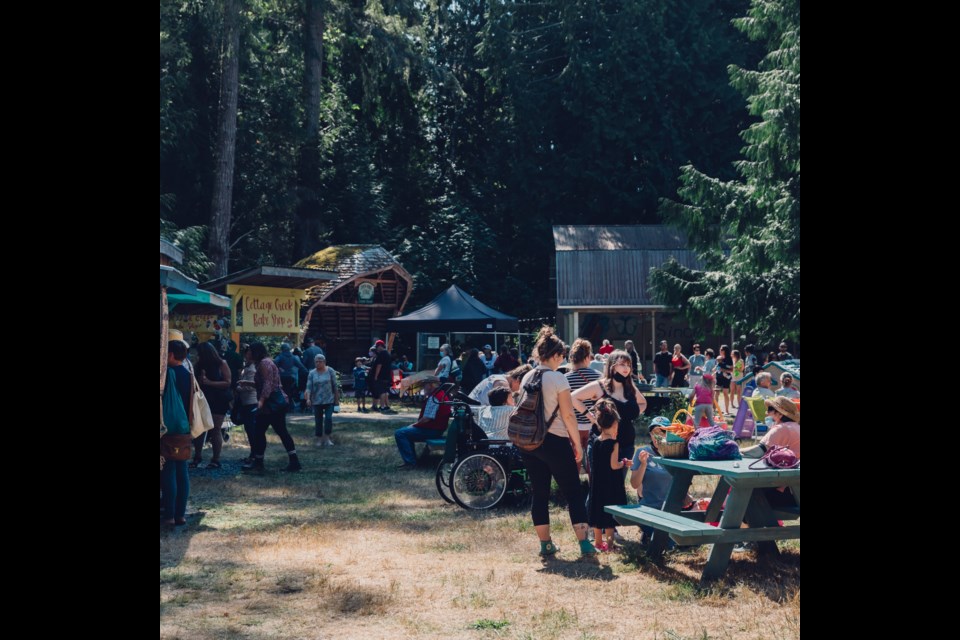The summer season is here, making it easier to find fresh local produce grown in the qathet region.
According to a recent (2023) provincial economic impact study completed by BC Association of Farmers' Markets (BCAFM), BC farmers’ markets contribute more than $232 million to the economy and generate positive ripple effects for surrounding businesses.
The regional report looking at the Sunshine Coast, including Powell River Farmers' Market (PRFM) and Sechelt Farmers' Market, both BCAFM members, found that the overall economic impact was an estimated $5.2 million coming into the region, due to folks buying at farmers' markets and also visiting and shopping at nearby businesses.
The annual direct sales at the two Sunshine Coast farmers' markets was $3.4 million; on average, folks spent $41 per trip to the farmers' market in both qathet and Sechelt; in peak market season there was an estimated 346 shoppers per hour at the PRFM, and 397 per hour in Sechelt.
These statistics and numbers may not mean much to those concerned about contending with higher food and living costs and general inflation, but with the threat of US tariffs, climate change and other outside threats, supporting local farmers and strengthening food systems might be a way to combat that fear.
"Back in March, we were really watching the news and this uncertainty that was growing around the tariffs; when you have these kinds of events, much like we did with COVID-19 or the atmospheric rivers, there's always this surge of people wanting to buy local," said BCAFM membership and programs manager Melissa Maltais. "I was trying to think of ways to capture this momentum, and get people invested, not only financially, but also with their time in going to the farmers’ market."
So, the 2025 BC Farmers’ Market Summer Challenge was launched. Folks can sign up on the BC Farmers’ Market Tasting Passport app to complete five local actions that benefit BC farmers, food entrepreneurs and small businesses: Buy food from BC farmers and food entrepreneurs; make markets a weekly or monthly routine; walk, bike or take transit to a market at least once this season; add farmers’ markets to summer travel itinerary using the BC Farmers’ Market Trail; and follow markets online or subscribe for updates.
The market trail map is a great way to find out where farmers' markets are when travelling in BC. PRFM has been on the trail map for awhile, and now the Centralized Farmers' Market (CFM) has recently been added.
"We are a member of BCAFM and we are listed on the map," said Kate Sutherland, an organizer with CFM. "This means we are able to accept BC Farmers’ Market Nutrition Coupons."
Households enrolled in the program can receive up to $27 per week in coupons for up to 16 weeks, which can be spent at any BCAFM member farmers' markets.
"There's always been this conception that it costs more, and you know, sometimes it does," said Maltais. "The quality of my dollar goes far at the farmers’ market; I bought lettuce at the farmers’ market a week ago, and it's still fresh, and I have no problems eating it."
Maltais emphasized that there is nothing wrong with shopping at big box grocery stores, and that everyone, in some way, has to, but the quality is noticeably different, because fruits and vegetables are transported to the stores from far away, and so are not as fresh.
"[Produce at a farmers' market] is usually picked fresh that day, so the nutrient density in that is much better," said Maltais. "I'm not discounting the grocery store, that's where people have to shop, but if you have the opportunity to start shifting some of those buying habits to the farmers’ markets, then everyone is better off."
Each year, nearly one million tourists visit BC farmers’ markets, and according to the BCAFM, 30 per cent of Sunshine Coast respondents to the provincial impact study are reported to be day-trippers or tourists.
"Having more than one market in a smaller place happens quite a bit," said Maltais. "Prince George has two markets, same day, same time; Revelstoke as well, same day, same time."
But, Maltais said once people settle into their groove, generally things work out in the long run both for customers and farmers.
"You can't meet the needs of everybody in the community sometimes," said Maltais. "If it works out for the better and more people are served, then that's great."
Join the Peak’s email list for the top headlines right in your inbox Monday to Friday.




